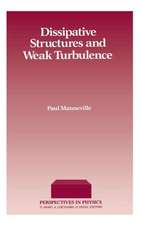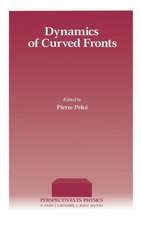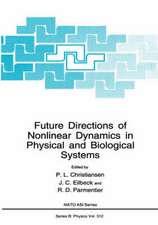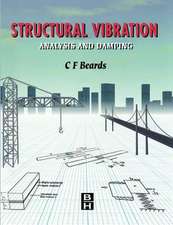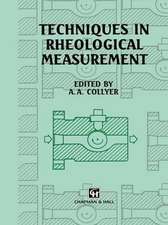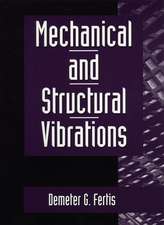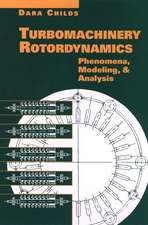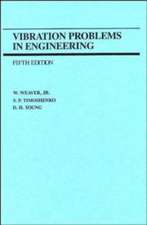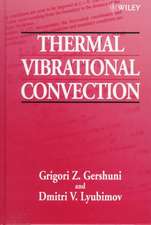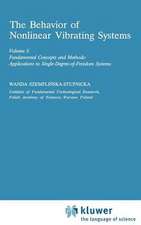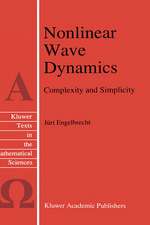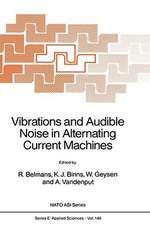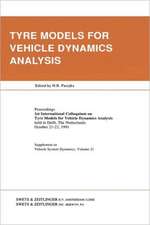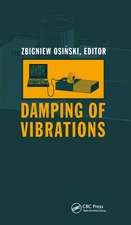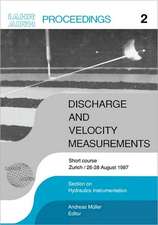Electroacoustical Reference Data
Editat de John Eargleen Limba Engleză Paperback – 14 dec 2012
| Toate formatele și edițiile | Preț | Express |
|---|---|---|
| Paperback (1) | 949.10 lei 6-8 săpt. | |
| Springer Us – 14 dec 2012 | 949.10 lei 6-8 săpt. | |
| Hardback (1) | 954.62 lei 6-8 săpt. | |
| Springer Us – 30 apr 1995 | 954.62 lei 6-8 săpt. |
Preț: 949.10 lei
Preț vechi: 1157.44 lei
-18% Nou
Puncte Express: 1424
Preț estimativ în valută:
181.61€ • 197.89$ • 153.03£
181.61€ • 197.89$ • 153.03£
Carte tipărită la comandă
Livrare economică 23 aprilie-07 mai
Preluare comenzi: 021 569.72.76
Specificații
ISBN-13: 9781461358398
ISBN-10: 1461358396
Pagini: 392
Ilustrații: IX, 378 p.
Dimensiuni: 155 x 235 x 21 mm
Greutate: 0.55 kg
Ediția:2002
Editura: Springer Us
Colecția Springer
Locul publicării:New York, NY, United States
ISBN-10: 1461358396
Pagini: 392
Ilustrații: IX, 378 p.
Dimensiuni: 155 x 235 x 21 mm
Greutate: 0.55 kg
Ediția:2002
Editura: Springer Us
Colecția Springer
Locul publicării:New York, NY, United States
Public țintă
ResearchDescriere
The need for a general collection of electroacoustical reference and design data in graphical form has been felt by acousticians and engineers for some time. This type of data can otherwise only be found in a collection of handbooks. Therefore, it is the author's intention that this book serve as a single source for many electroacoustical reference and system design requirements. In form, the volume closely resembles Frank Massa's Acoustic Design Charts, a handy book dating from 1942 that has long been out of print. The basic format of Massa's book has been followed here: For each entry, graphical data are presented on the right page, while text, examples, and refer ences appear on the left page. In this manner, the user can solve a given problem without thumbing from one page to the next. All graphs and charts have been scaled for ease in data entry and reading. The book is divided into the following sections: A. General Acoustical Relationships. This section covers the behavior of sound transmis sion in reverberant and free fields, sound absorption and diffraction, and directional characteris tics of basic sound radiators. B. Loudspeakers. Loudspeakers are discussed in terms of basic relationships regarding cone excursion, sensitivity, efficiency, and directivity index, power ratings, and architectural layout. c. Microphones. The topics in this section include microphone sensitivity and noise rating, analysis of directional properties, stereo microphone array characteristics, proximity effects, and boundary conditions. D. Signal Transmission.
Cuprins
I: General Acoustical Relationships.- 1. Sound Pressure and dB Lp (Sound Pressure Level).- 2. Frequency and Wavelength in Air.- 3. Inverse Square Losses in a Free Field.- 4. Attenuation with Distance from Plane and Line Sources in a Free Field.- 5. Atmospheric Sound Absorption as a Function of Frequency and Relative Humidity, I.- 6. Atmospheric Sound Absorption as a Function of Frequency and Relative Humidity, II.- 7. Atmospheric Absorption Due to Inverse Square Losses and Relative Humidity.- 8. NC and PNC Noise Criteria Curves.- 9. Sound Transmission Class (STC) Curves.- 10. Helmholtz Resonators.- 11. Resonance Frequency for Pipes Open at Both Ends.- 12. End Correction for Pipes.- 13. Resonance Frequency for Pipes Open at One End.- 14. Diffraction of Sound by a Cylinder, a Cube, and a Sphere.- 15. Response Curves Showing Diffraction by 10 Objects of Different Shape.- 16. Fresnel Diffraction over Sound Barriers.- 17. Definition of Critical Distance.- 18. Room Constant as a Function of Surface Area and Absorption.- 19. Relation between $$ \overline \alpha $$ and $$ - \ln \;(1 - \overline \alpha ) $$ in Reverberation Time Calculations.- 20. Reverberant Level as a Function of Room Constant and Acoustical Power.- 21. Mean Free Path (MFP), Room Volume, and Surface Area.- 22. Sound Attenuation over Distance in Semireverberant Spaces.- 23. Critical Distance as a Function of Room Constant and Directivity Factor.- 24. Acoustical Power Required to Produce a Level of 94 dB Lp as a Function of Room Volume and Reverberation Time.- 25. Sound Pressure Level Produced by 1 Acoustic Watt as a Function of Room Constant and Distance from Source.- 26. Estimation of Total Absorption When Room Volume and Reverberation Time Are Known.- 27. Estimation of Room Constant When Room Volume and Reverberation Time Are Known.- 28. Estimation of Room Boundary Area When Volume Is Known.- 29. Reverberation Time Ratios with and without Atmospheric Losses.- 30. Relationship between Directivity Factor and Directivity Index.- 31. Wave number (k) as a Function of Piston Size and Frequency.- 32. Polar Response of a Piston Mounted in a Large Baffle.- 33. Polar Response of a Piston Mounted at the End of a Long Tube.- 34. Polar Response of an Unbaffled Piston.- 35. Off-axis Response of a Piston in a Large Baffle.- 36. Directivity of a Piston in a Large Baffle, at the End of a Long Tube, and in Free Space.- II. Loudspeakers.- 37. Transmission Coefficient versus Frequency for a Piston Mounted in a Large Baffle.- 38. Normalized Mutual Coupling for Multiple Pistons.- 39. Acoustical Power Output Produced on One Side of a Piston in a Large Baffle as a Function of Amplitude, Radius, and Frequency.- 40. Sound Pressure Level Produced by a Piston in a Large Baffle at a Distance of 1 Meter as a Function of Amplitude, Radius, and Frequency.- 41. Sound Pressure Level Produced by a Piston in a Large Baffle as a Function of Radiated Power and Distance.- 42. Peak Amplitude for 1 Acoustical Watt Radiated by a Piston into Half-Space as a Function of Radius and Frequency.- 43. Transducer Cone Deflection as a Function of Resonance Frequency.- 44. Second Harmonic Distortion in Horns.- 45. Frequency Modulation (FM) Distortion in Cone Transducers.- 46. Nominal Loudspeaker Efficiency as a Function of On-axis Sensitivity and Directivity Index.- 47. Sensitivity Ratings for Loudspeaker Systems.- 48. Plane Wave Tube (PWT) Sensitivity Ratings for Compression Drivers.- 49. Radiation Resistance for Various Horn Flare Development Curves.- 50. High-Frequency Driver Electrical Derating for Flat Power Response Equalization.- 51. Duty Cycle-Related Power Ratings.- 52. Resistance Change with Temperature for Copper.- 53. Weighting Curves for Loudspeaker Power Measurements.- 54. House Equalization Standard Curves for Sound Reinforcement and Program Monitoring.- 55. Transducer Sensitivity as a Function of Atmospheric Pressure and Temperature.- 56. Relation between 2? and 4? Loading and Baffle Size.- 57. Horn Mouth Size versus ?6 dB Beamwidth Control.- 58. Beamwidth Control of Multicellular Horns.- 59. Beamwidth Narrowing with Vertical Stacked Horn Arrays.- 60. Directivity versus Horizontal and Vertical Beamwidth.- 61. Beamwidth and Directivity Characteristics of a Pair of 250-mm (10-in) Low-Frequency Transducers.- 62. Beamwidth and Directivity Characteristics of a Pair of 300-mm (12-in) Low-Frequency Transducers.- 63. Beamwidth and Directivity Characteristics of a Pair of 380-mm (15-in) Low-Frequency Transducers.- 64. Distributed Loudspeaker Layout: Hexagonal Array.- 65. Distributed Loudspeaker Layout: Square Array.- 66. Dividing Networks; 6 dB per Octave Slopes.- 67. Dividing Networks; 12 dB per Octave Slopes.- 68. Porting Data for Vented Loudspeaker Enclosures.- 69. Thiele-Small Parameters for Low-Frequency Horn Applications.- 70. Simple Line Arrays.- III. Microphones.- 71. Nomograph for Microphone Output Power and Voltage versus Microphone Impedance.- 72. Microphone Self-Noise Rating Curves.- 73. EIA GM Microphone Sensitivity Rating.- 74. First-Order Microphone Pattern Data.- 75. Mid-Side/XY Conversion Data.- 76. Random Energy Efficiency, Directivity Factor, and Distance Factor as a Function of Polar Pattern.- 77. Front-to-Total Ratio as a Function of Polar Pattern.- 78. Front-Back Ratio versus Polar Pattern.- 79. Omni- and Bidirectional Components of the First-Order Cardioid Family.- 80. Back-to-Back Cardioid Components of the First-order Cardioid Family.- 81. Splay Angles and Separation for Various Near-Coincident Stereo Microphone Arrays.- 82. Mid-Side (MS) and XY Microphone Pairs.- 83. Multipath and Multimicrophone Interference Effects.- 84. Effect of Dipole Dimension on Directional Microphone Frequency Response.- 85. Basic Proximity Effect in Directional Microphones.- 86. Proximity Effect in a Dipole Microphone at Several Distances.- 87. On-axis Proximity Effect in a Cardioid Microphone at Several Distances.- 88. Proximity Effect in a Cardioid Microphone as a Function of Azimuth Angle.- 89. On-axis and Diffuse Field Incidence Response of Omnidirectional Microphones.- 90. Delay versus Level for Accent Microphones in Recording.- 91. Microphone Boundary Size versus 2? to 4? Transition Frequency.- 92. Higher-Order Microphone Characteristics.- 93. Microphone Line Losses.- IV. Signal Transmission.- 94. Time Constant versus Frequency.- 95. RIAA Disc Pre-emphasis and De-emphasis.- 96. FM Broadcasting Pre-emphasis and De-emphasis.- 97. Early 78 rpm and 331/3 rpm Disc Pre-emphasis and De-emphasis Standards.- 98. Motion Picture Mono Optical Reproduce Standard.- 99. Digital Pre-emphasis and De-emphasis Standard.- 100. Comparison of Meters Used in Broadcasting and Recording.- 101. Power Ratios Expressed in dBm.- 102. Voltage Ratios Expressed in dBu.- 103. Power Ratios Expressed in dBW.- 104. Voltage Ratios Expressed in dBV.- 105. Sine Wave Voltage Output versus DC Voltage Capability.- 106. Resistance Values for Various Lengths and Gauges of Copper Wire.- 107. Metric Wire Gauges.- 108. High-Frequency Transducer Protection Capacitors.- 109. Design of Symmetrical T-pads.- 110. Design of L-pads.- 111. Summing of Levels.- 112. Distortion Percentage and Level.- 113. Load Impedance as a Function of Power Input in 70-volt, 100-volt, and 25-volt Distribution Systems.- 114. Maximum Wire Runs for 0.5-dB Loss in 70-volt Systems.- 115. Peak and rms Values of Waveforms.- 116. Input and Output Impedances of Electronic Devices.- 117. Loudspeaker Damping Factor as a Function of Line Length and Wire Gauge.- 118. Amplifier Requirements: Direct Field Considerations.- 119. Amplifier Requirements: Reverberant Field Considerations.- 120. Panpot Response: One Channel to Two.- 121. Panpot Response: One Channel to Three.- 122. Quadraphonic Panpot Response: One Channel to Four.- 123. Effect of Noise on Speech Communication.- 124. Equivalent Acoustic Distance (EAD) and A-Weighted Noise Level.- 125. Horn Coverage Angle as Seen in Plan View.- 126. Peutz’s Percentage Articulation Loss of Consonants (Alcons).- 127. Augspurger’s Modification of Peutz’s Data.- 128. Calculation of Articulation Index (AI).- 129. Typical Motion Picture Screen Losses.- 130. House Equalization Standard for Motion Picture Systems.- 131. House Equalization for Motion Picture Systems: Adjustments for House Size.- 132. ISO Preferred Numbers.- V. Psychoacoustical Data.- 133. Fletcher-Munson Equal Loudness Contours.- 134. Robinson-Dadson Equal Loudness Contours.- 135. Churcher-King Equal Loudness Contours.- 136. Determination of “Twice Loudness” at Low Frequencies.- 137. Calculation of Loudness in Sones.- 138. Standard Weighting Curves.- 139. Loudness and Signal Duration.- 140. Pitch and Level Relationships, I.- 141. Pitch and Level Relationships, II.- 142. Frequency and Pitch Relationships.- 143. Critical Bandwidth.- 144. Annoyance Due to Echo Effects.- 145. Blauert and Laws Criterion for the Audibility of Signal Group Delay.- 146. Optimum Reverberation Time as a Function of Room Volume and Usage.- 147. Optimum Reverberation Time as a Function of Frequency.- 148. Subjective Effects of First Reflections in a Concert Hall.- 149. Binaural Lateral Masking.- 150. Stereophonic Localization: Franssen’s Data.- 151. The Precedence Effect (Haas Effect).- 152. Bauer’s Stereophonic Law of Sines.- 153. Pressures and Pressure Levels Generated by a Variety of Sound Sources.- 154. Typical Male Speech Spectra.- 155. Hearing Threshold Shift as a Function of Age.- VI. Musical Instruments.- 156. Frequency Ranges of Musical Instruments and the Human Voice.- 157. Dynamic Ranges of Wind and String Instruments.- 158. Directional Properties of Brass Instruments.- 159. Directional Properties of Woodwind Instruments.- 160. Directional Properties of String Instruments.- 161. Octave Band Spectral Amplitude Distribution, Music Sources.- VII. Analog Magnetic Recording.- 162. Track Width Standards for Professional Magnetic Recording.- 163. Track Width Standards for Consumer Tape Formats.- 164. Azimuth Losses in Tape Playback.- 165. Oxide Thickness Losses in Tape Playback.- 166. Spacing Losses in Tape Playback.- 167. Gap Length Losses in Tape Playback.- 168. Reference Surface Fluxivity Standards for Tape Recording.- 169. IEC Equalization Standards for Professional Tape Playback.- 170. NAB (National Association of Broadcasters) Standard for Professional Tape Playback.- 171. AES (Audio Engineering Society) Standard for Professional Tape Playback at 76 cm/sec (30 in/sec).- 172. Standards for Playback of Consumer Tape Formats.- 173. IEC to NAB Conversion at 38 cm/sec.- 174. IEC to NAB Conversion at 19 cm/sec.- 175. Standard Weighting Curve for Tape Flutter Measurements.- Unit Conversion Table.- References.



